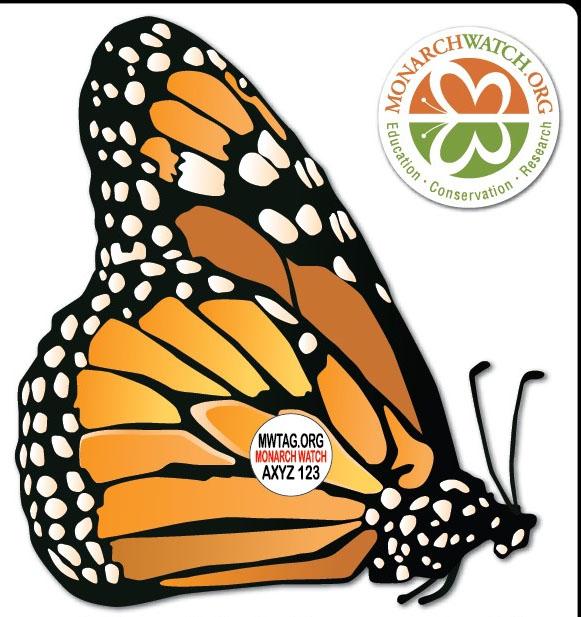
Credit: Iowa State University News Service
AMES, Iowa – A recently published analysis of data on tagged monarch butterflies migrating from the United States to Mexico emphasizes the importance of creating new habitat to ensure the future of the species’ iconic migratory pattern.
The study, published this month in the peer-reviewed journal Frontiers in Ecology and Evolution, drew on data collected on 1.4 million monarch butterflies that were tagged in the United States Midwest from 1998 to 2015. The study presents evidence that the migration success of monarchs hasn’t declined and thus cannot explain the steep decline in the monarch population over the last few decades.
Several lines of evidence support the primary hypothesis for the monarch population decline, which is the loss of milkweed habitat. John Pleasants, an adjunct associate professor in Iowa State University’s Department of Ecology, Evolution and Organismal Biology, said the analysis should put to rest this persistent alternative explanation for the population decline that posits monarch butterflies are experiencing increasing mortality during their fall migration to Mexico, Pleasants said.
“If there was some problem with migration, we should have found fewer tagged monarchs recovered in Mexico over time, but that was not the case,” he said.
Monarch butterflies carry out a remarkable migration pattern year after year. Monarchs born in Midwestern states move south during the late summer and fall and arrive in central Mexico for the winter. The monarchs then move northward again in the spring. But the monarch population has dwindled to such an extent over the last two decades that scientists worried the migratory system could collapse forever.
Focus on milkweed
In response, the Iowa Monarch Conservation Consortium, a diverse partnership of 45 organizations supported by Iowa State University, the Iowa Department of Agriculture and Land Stewardship, and the Iowa Department of Natural Resources, is spearheading an effort to plant between 480,000 and 830,000 acres of new habitat by 2038. This effort focuses on milkweed, the only plant on which monarchs will lay eggs.
Pleasants said some researchers looked at yearly surveys of monarch adults and did not find a decline at the same time the overwintering population in Mexico was falling and hypothesized that increasing mortality during the southward migration may be driving the overall population decline. Those researchers suggested increased parasite load or declining nectar availability in Texas might contribute to migratory mortality. However, Pleasants said no reliable data show a decline in those factors. Instead, Pleasants said the data show no trend in the tag recovery rate, an indication the migratory journey hasn’t become more dangerous over the years.
Pleasants said the discrepancy between the surveys of the summer populations and the overwintering population likely stems from the loss of milkweed habitat on agricultural land in the Midwest. Milkweed was once plentiful in farm fields, providing plenty of habitat for monarchs in rural areas, until about 2006 when it had all but disappeared due to herbicide use. Surveys done in the late 1990s and early 2000s did not include field habitat and therefore missed the monarchs in fields, underestimating the true size of the population, Pleasants said. Since 2006, population estimates from those surveys have been highly correlated with overwintering numbers.
“Our analysis points us back to the idea that the loss of milkweeds, particularly from agricultural fields, is most responsible for this decline,” he said. “If you want to bring the monarch butterfly back, you need to bring the milkweeds back.”
###
Media Contact
Fred Love
[email protected]
Original Source
https:/
Related Journal Article
http://dx.




